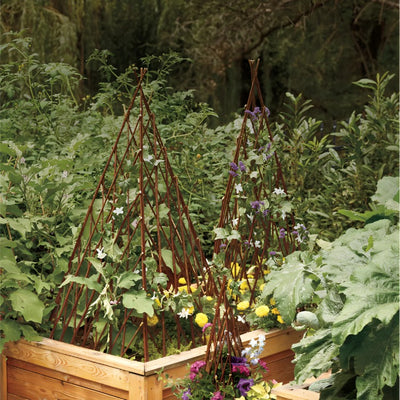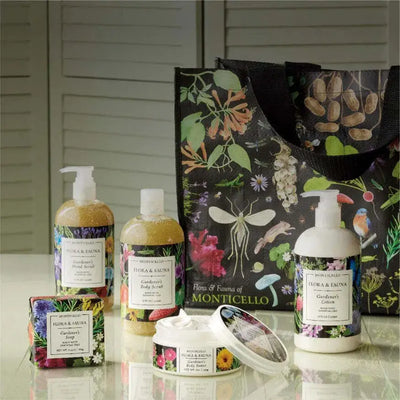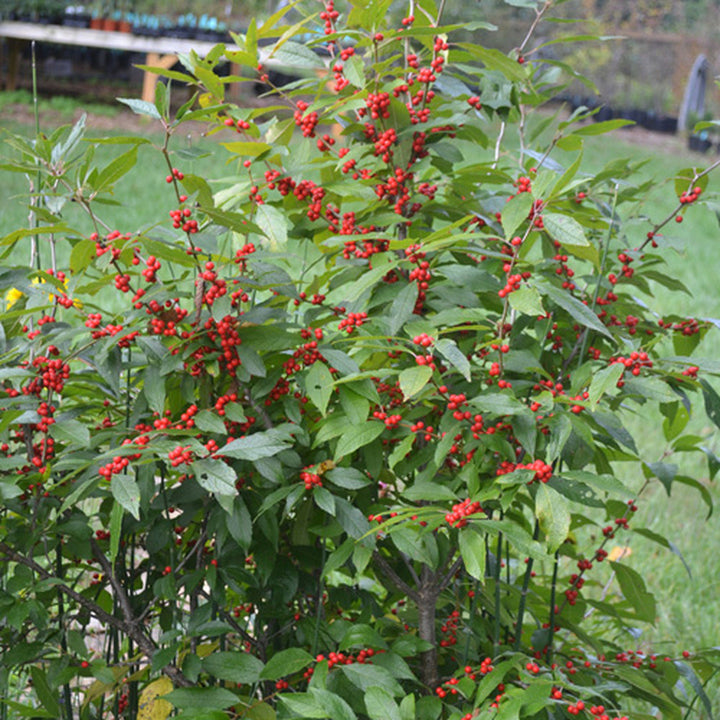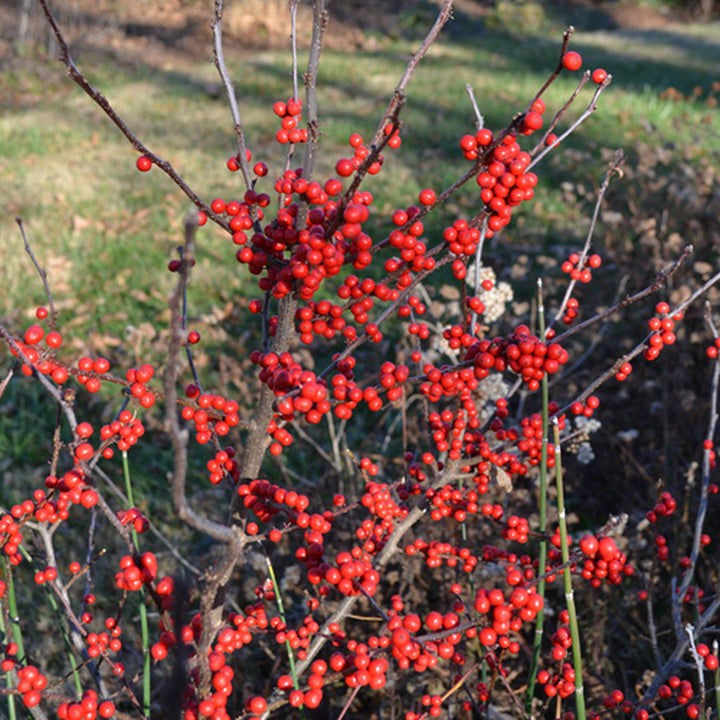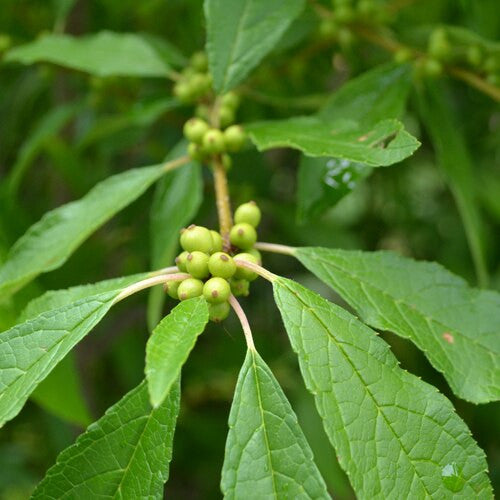Plant type: Deciduous North American shrub
Description: Bright red fruits persist through the winter on female plants; male plants flower but do not bear fruit; dark green foliage turns yellow in fall
Habit: Grows 6 to 10 feet tall and wide, suckering
Culture: Prefers moist, acidic soils high in organic matter and full sun to part shade
Hardiness: USDA Zones 3 through 9
Jefferson documented
This native shrub, also known as “black alder,” ranges from Newfoundland to Minnesota, south to Georgia and Tennessee and is typically found in swamps and by ponds. It was introduced to European gardens in 1736. Writing to Philadelphia plant collector William Hamilton in March, 1808, Thomas Jefferson referred to a recent shipment of plants that included 12 “Winter berry (Prinus verticillatus [sic]),” and noted that “the swamps in this neighborhood are now red with this berry” (the shrub was initially given the name Prinos verticillatus by Linnaeus). Garden historian Ann Leighton believes this is the “Red Berry” George Washington looked for when riding out to find movable shrubs and trees for Mount Vernon. The fruits are highly ornamental and edible to birds and wildlife.
This species is dioecious, meaning a male and a female plant are both required for pollination and fruit set. Our plants are unsexed due to their immaturity; we recommend purchasing more than one plant to increase the likelihood of fruit production, including berries and seeds.
Details
| Genus | Ilex |
|---|---|
| Species | verticillata unsexed |

